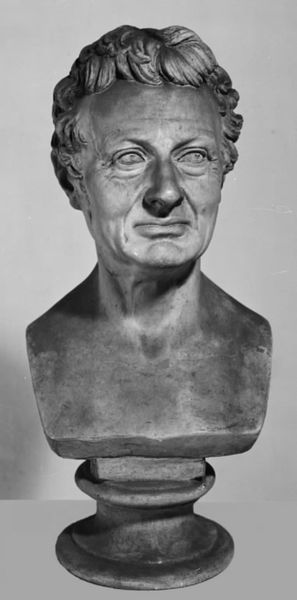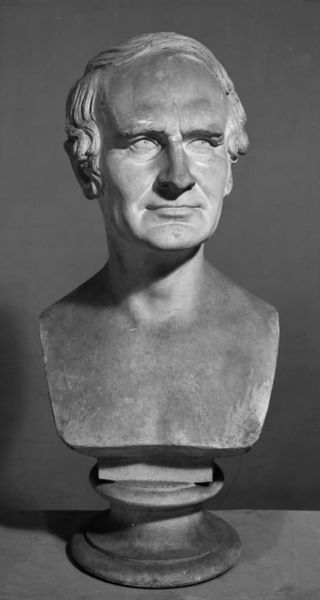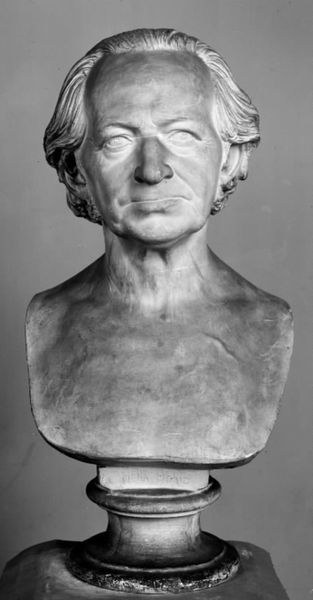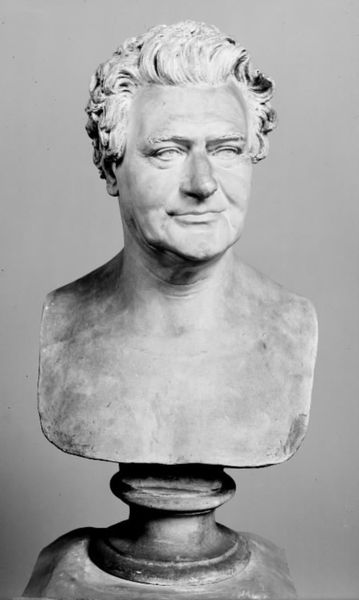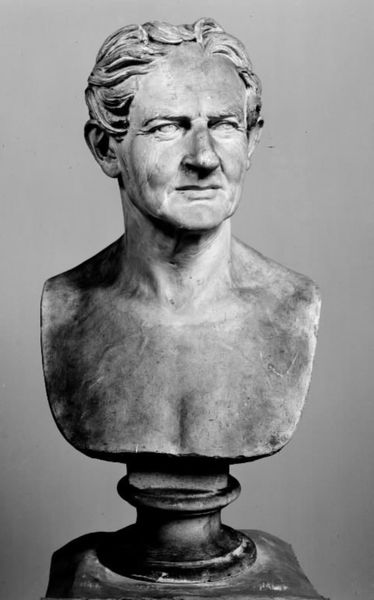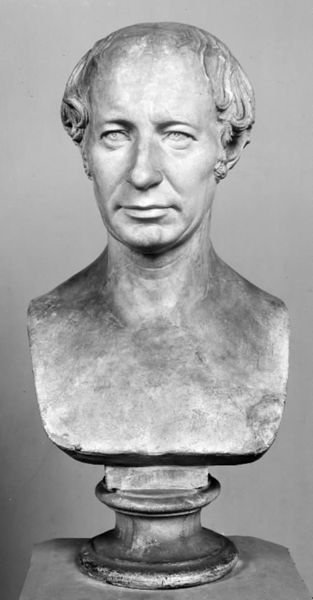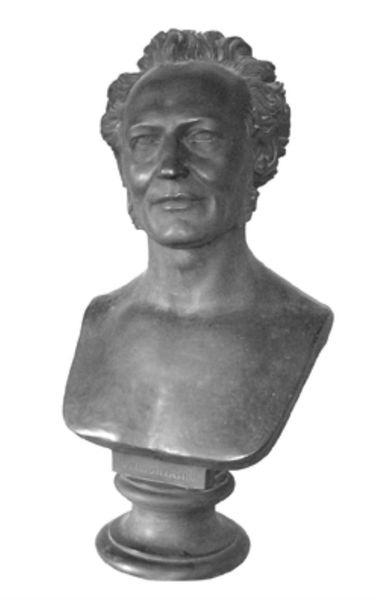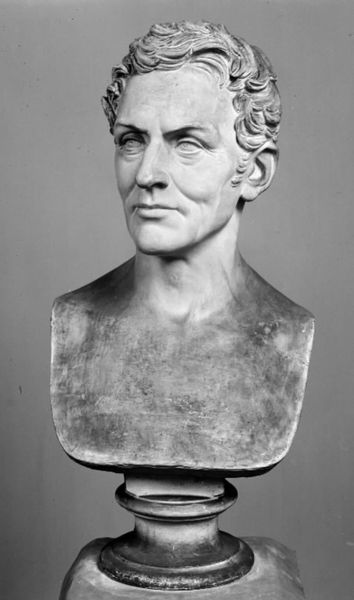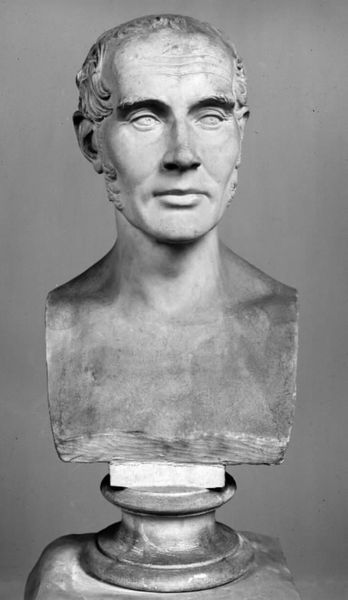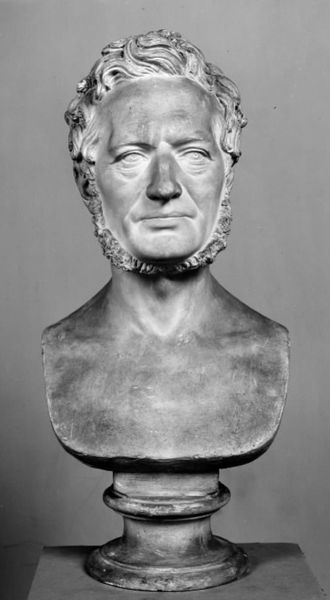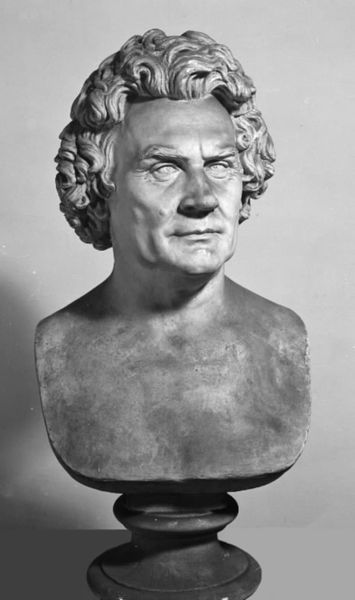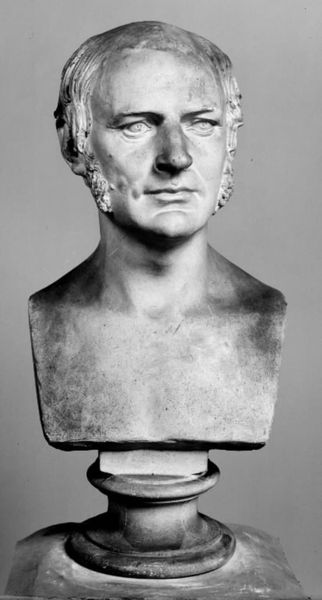
sculpture, marble
#
portrait
#
neoclacissism
#
portrait image
#
portrait
#
classical-realism
#
frontview face
#
male portrait
#
portrait reference
#
portrait head and shoulder
#
sculpture
#
black and white
#
mid-section and head portrait
#
facial portrait
#
marble
#
digital portrait
Dimensions: 59.5 cm (height) (Netto)
Curator: Hello and welcome. We are standing before H.W. Bissen's marble sculpture "Badelæge Vincenz Priessnitz", created in 1844. It resides here at the SMK, Statens Museum for Kunst. Editor: What strikes me is how… reserved this sculpture feels. It's solid, cold. The way the light plays on the marble, it almost makes him seem translucent, yet utterly impenetrable. Curator: Indeed. Bissen was a master of neoclassical ideals, focusing on clean lines and idealized forms. Observe how he captures the subject, Vincenz Priessnitz, with an emphasis on rational order and calm authority. Note the precise anatomical rendering, the carefully sculpted hair, and the even, almost emotionless gaze. Editor: He does look terribly serious, doesn't he? You'd think the father of hydrotherapy would have a twinkle in his eye, maybe a splash of water somewhere! It is very crisp though, if austere. But maybe that says something about the medical field at the time? Curator: Precisely. The work exemplifies the period’s belief in science and reason. It strives to capture Priessnitz's essence not as a man of exuberant energy, but as an emblem of controlled knowledge and mastery. It's not simply about likeness but about presenting a particular persona aligned with prevailing social values. Semiotically, his smooth skin denotes good health and wisdom; the toga suggests education. Editor: So, less about a jolly water doctor, and more about… the ideal of medical stoicism? Still, that cool, unreadable expression does invite a question: what thoughts, what hopes, are buried beneath all that exquisitely carved stone? Or perhaps it is commentary itself? A cool unemotional visage representative of that branch of scientific study? It’s like the sculpture itself has become a sort of beautiful, stone mask. Curator: Yes. It leaves the interpretation open-ended while imposing that air of objective truth that the Neoclassical period admired so greatly. Editor: It makes one ponder on the changing notions of 'ideal' within a culture. I like it, this marble man of mystery. A serious image of someone known for a less-than serious career. Curator: A fascinating testament to its time. Thank you for your insightful observations. Editor: And thank you for the art history lesson! I appreciate the chance to mull over this stoic fellow.
Comments
No comments
Be the first to comment and join the conversation on the ultimate creative platform.
